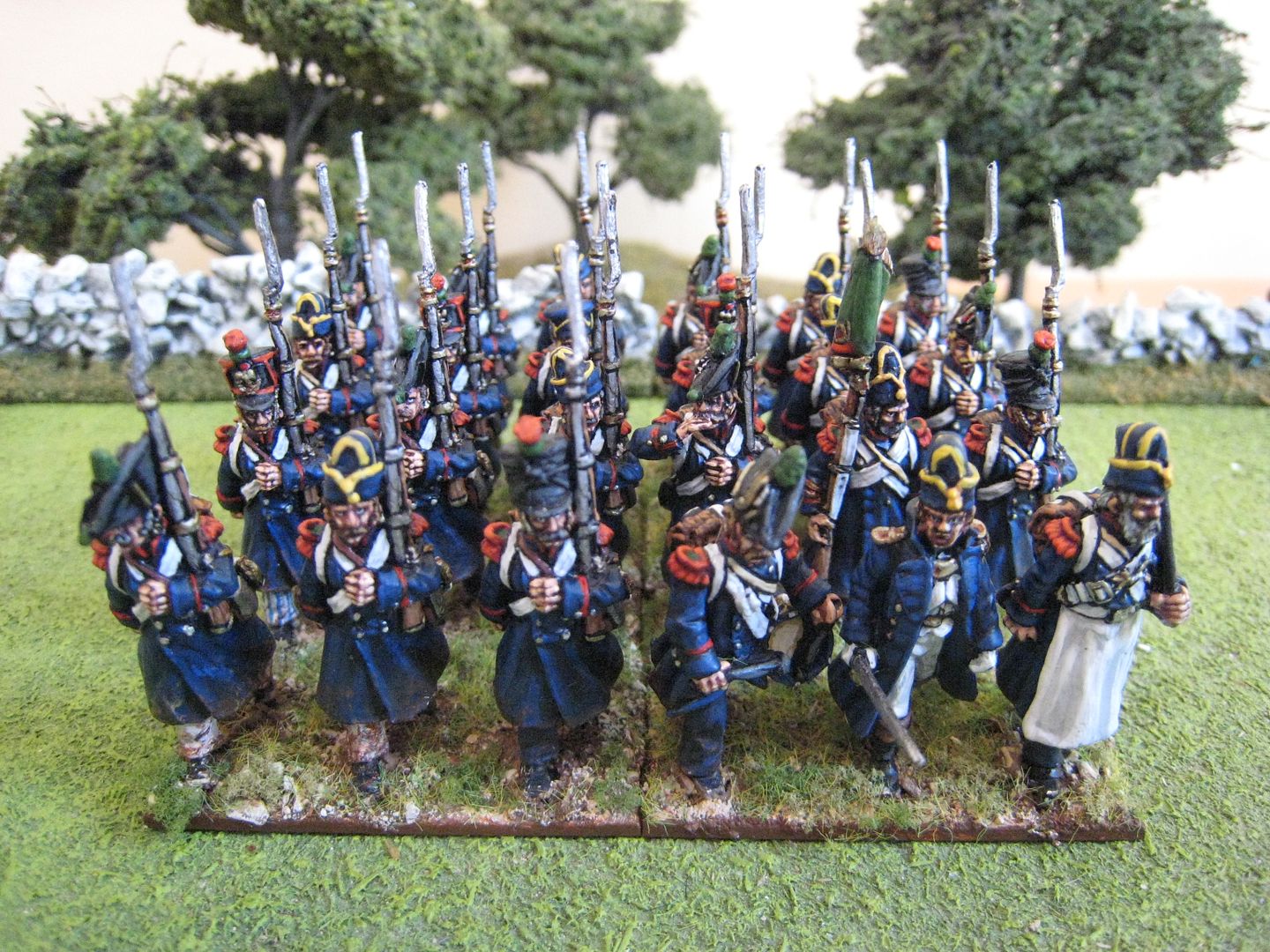
I painted these figures a while ago but forgot to post pictures. This unit represents the 4th Chasseurs of the Imperial Guard and utilises the 2 special packs of figures that Perry Miniatures released for the 3rd and 4th regiment of Grenadiers and Chasseurs. These Middle Guard units were hastily raised in 1815 and apparently suffered from supply issues - hence the lack of bearskins and the variety of headgear. The 4th Chasseurs formed part of the final attack on the centre of Wellington's line at Waterloo. Losing heavily from artillery fire and volleys from the British Guards, the 4th appears to have been pretty much wiped out.
In the "General de Brigade" orbat I'm using for 1815, the 4th Chasseurs appear as a 24 figure unit in Michel's brigade, with 2 battalions of the 3rd Chasseurs. Perry Miniatures do a very nice Michel personality figure, so it is tempting to work up the rest of the brigade at some point. Perry give you several options for the Guard Chasseurs: standing in full dress, standing in greatcoats, advancing in full dress, advancing in greatcoats, and advancing in greatcoats and funny hats, as used here. For the Waterloo orbat you need 6 battalions of Chasseurs, 2 each for the 2nd and 3rd and then one apiece for the 1st and 4th. I'm thinking that having started with the 4th I could work backwards and progressively "smarten up" each regiment. So whilst the 4th Chasseurs use just the special "ragged" figures, the 3rd Chasseurs' battalions would consist of a mix of hats and a few bearskins. One battalion of the 2nd would have greatcoats and bearskins and then the other and the 1st Chasseurs would be in full dress. That way I could use all the various packs produced by the Perries! I did think about making the 4th ultra scruffy by painting the greatcoats in a variety of different colours, but decided that I want my Guard units to look like the Guard and so all greatcoats will be painted dark blue (I used the Foundry "French Blue 65" palette with some extra highlights of "Deep Blue 20"). However, I did decide to mix up the trousers a little.
On the workbench at the moment is more AWI - French infantry and some civilians. Next week I'll post about my newly-completed 15mm regiment, being the star of a new period!
Blogger update: I still can't post comments on other blogs, it seems, despite fiddling around with cookies, settings and other things. I hope Blogger sort this out because it's getting to be very annoying. I'm very much enjoying what other followers are doing at the moment and it's frustrating not being able to say so!
24 figures. Painted February and March 2011.





















